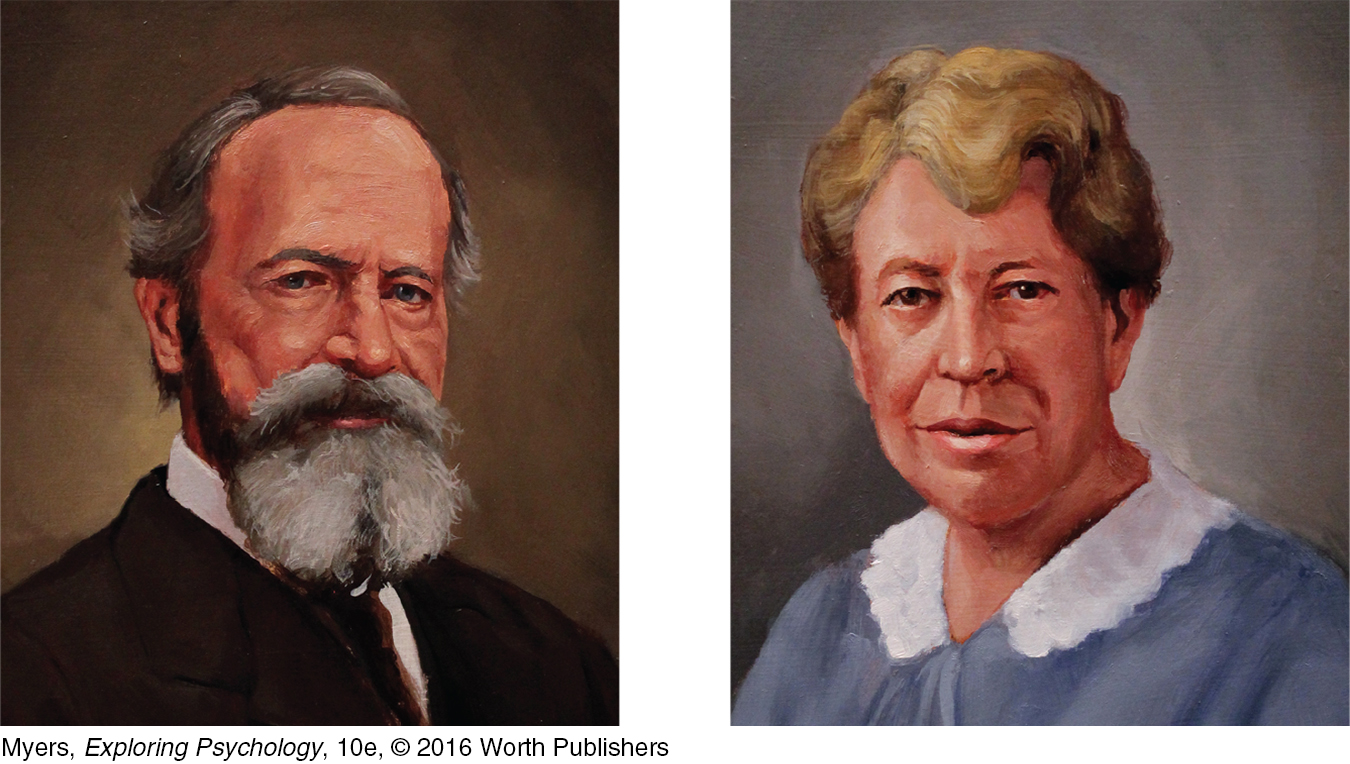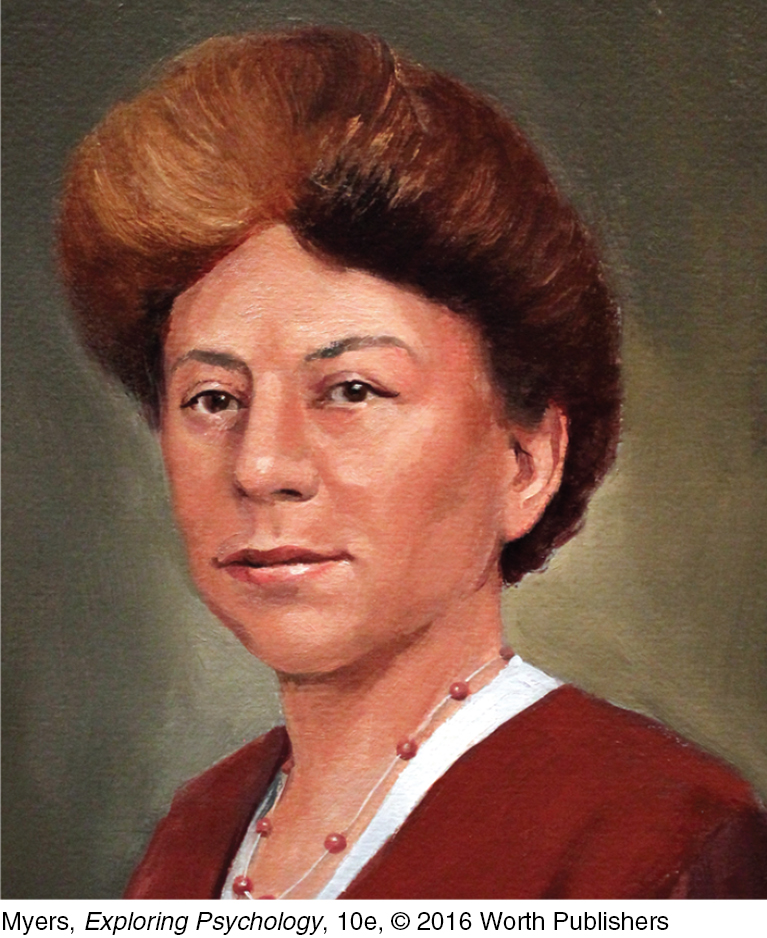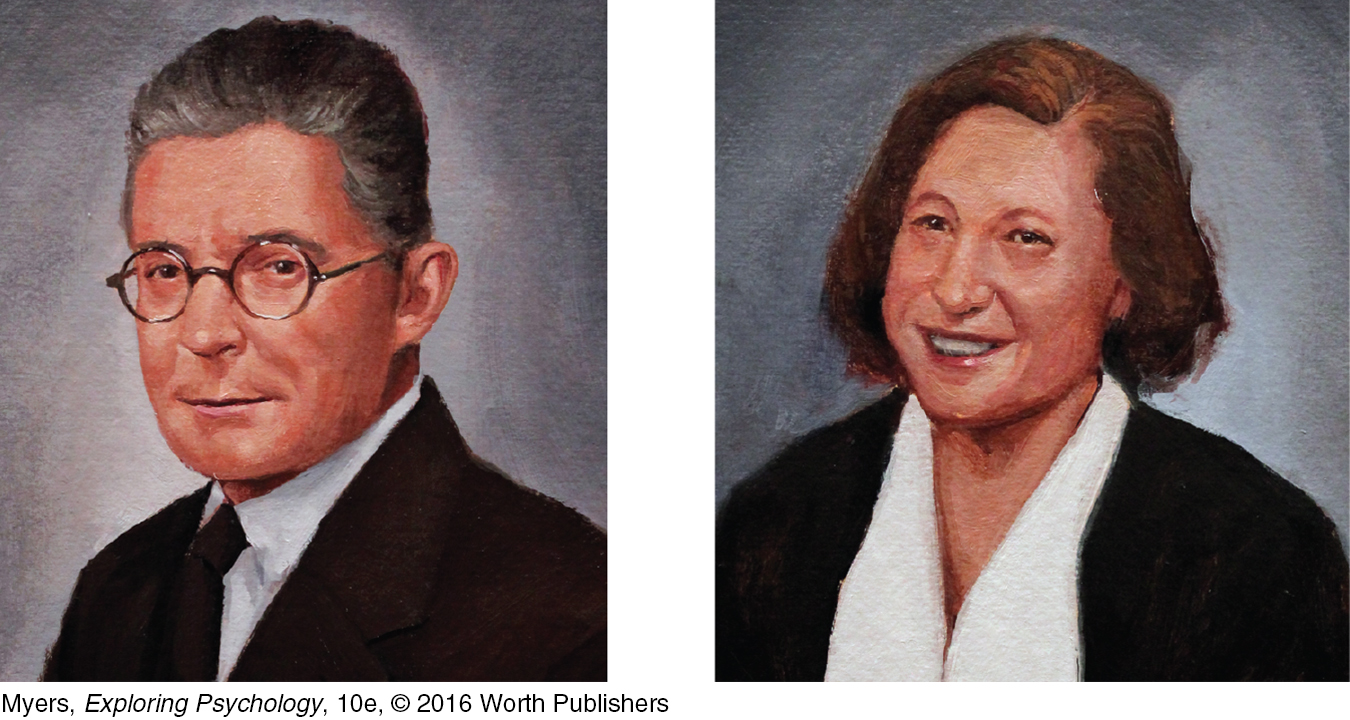1.3 Psychology’s Roots
1-2 What were some important milestones in psychology’s early development?
To be human is to be curious about ourselves and the world around us. Before 300 B.C.E., the Greek philosopher Aristotle theorized about learning and memory, motivation and emotion, perception and personality. Today we chuckle at some of his guesses, like his suggestion that the source of our personality is the heart. But credit Aristotle with asking the right questions.
Psychological Science Is Born

Wilhelm Wundt Wundt established the first psychology laboratory at the University of Leipzig, Germany.
PSYCHOLOGY’S FIRST LABORATORY Philosophers’ thinking about thinking continued until the birth of psychology on a December day in 1879, in a small, third-floor room at Germany’s University of Leipzig. There, two young men were helping an austere, middle-aged professor, Wilhelm Wundt, create an experimental apparatus. Their machine measured the time it took for people to press a telegraph key after hearing a ball hit a platform (Hunt, 1993). Curiously, people responded in about one-tenth of a second when asked to press the key as soon as the sound occurred—and in about two-tenths of a second when asked to press the key as soon as they were consciously aware of perceiving the sound. (To be aware of one’s awareness takes a little longer.) Wundt was seeking to measure “atoms of the mind”—the fastest and simplest mental processes. So began the first psychological laboratory, staffed by Wundt and by psychology’s first graduate students.
structuralism early school of thought promoted by Wundt and Titchener; used introspection to reveal the structure of the human mind.
functionalism early school of thought promoted by James and influenced by Darwin; explored how mental and behavioral processes function—how they enable the organism to adapt, survive, and flourish.
PSYCHOLOGY’S FIRST SCHOOLS OF THOUGHT Before long, this new science of psychology became organized into different branches, or schools of thought, each promoted by pioneering thinkers. Two early schools were structuralism and functionalism. As physicists and chemists discerned the structure of matter, so psychologist Edward Bradford Titchener aimed to discover the mind’s structure. He engaged people in self-reflective introspection (looking inward), training them to report elements of their experience as they looked at a rose, listened to a metronome, smelled a scent, or tasted a substance. What were their immediate sensations, their images, their feelings? And how did these relate to one another? Alas, introspection proved somewhat unreliable. It required smart, verbal people, and its results varied from person to person and experience to experience. As introspection waned, so did structuralism. Hoping to assemble the mind’s structure from simple elements was rather like trying to understand a car by examining its disconnected parts.
Philosopher-psychologist William James thought it would be more fruitful to consider the evolved functions of our thoughts and feelings. Smelling is what the nose does; thinking is what the brain does. But why do the nose and brain do these things? Under the influence of evolutionary theorist Charles Darwin, James assumed that thinking, like smelling, developed because it was adaptive—it contributed to our ancestors’ survival. Consciousness serves a function. It enables us to consider our past, adjust to our present, and plan our future. To explore the mind’s adaptive functions, James studied down-to-earth emotions, memories, willpower, habits, and moment-to-moment streams of consciousness.

William James and Mary Whiton Calkins James was a legendary teacher-writer who authored an important 1890 psychology text. He mentored Calkins, who became a pioneering memory researcher and the first woman president of the American Psychological Association.
PSYCHOLOGY’S FIRST WOMEN As these names illustrate, the early pioneers of most fields, including psychology, were predominantly men. In 1890—thirty years before American women had the right to vote—James admitted Mary Whiton Calkins into his graduate seminar over the objections of Harvard’s president (Scarborough & Furumoto, 1987). When Calkins joined, the other students (all men) dropped out. So James tutored her alone. Later, she finished all of Harvard’s Ph.D. requirements, outscoring all the male students on the qualifying exams. Alas, Harvard denied her the degree she had earned, offering her instead a degree from Radcliffe College, its undergraduate “sister” school for women. Calkins resisted the unequal treatment and refused the degree. She nevertheless went on to become a distinguished memory researcher and the American Psychological Association’s (APA’s) first female president in 1905.

Margaret Floy Washburn The first woman to receive a psychology Ph.D., Washburn synthesized animal behavior research in The Animal Mind (1908).
The honor of being the first official female psychology Ph.D. later fell to Margaret Floy Washburn, who also wrote an influential book, The Animal Mind, and became the APA’s second female president in 1921. But Washburn’s gender barred doors for her, too. Although her thesis was the first foreign study Wundt published in his psychology journal, she could not join the all-male organization of experimental psychologists founded by Titchener, her own graduate adviser (Johnson, 1997).
RETRIEVE IT
Question
z6VPRQMwdtl33C1NuMzv3JIFpDPfLxWP/fRC75QojbKQYSMsaK5GssZAAl5nx9sobkdjFuLHLo72dN7m
ANSWER: Scientific psychology began in Germany in 1879 when Wilhelm Wundt opened the first psychology laboratory.
Question
mlxrzzOYGGbr5bG+x4N53heewJP32RK2AYeykK06CdPb32e5Q7RbXnNlDDNY+PoO+pXJpshqbB5/DOs7GAb/FnrpRMGAl0bg3vA94YB5uDs=
ANSWER: People's self-reports varied, depending on the experience and the person's intelligence and verbal ability.
Question
The school of M5PQOH+JfRZlFcQVeqSeobzq+zE=
used introspection to define the mind's makeup; KSNdR2xfuYgIStMBsBZ/jZvHSBs=
focused on how mental processes enable us to adapt, survive, and flourish.
Psychological Science Develops
1-3 How did psychology continue to develop from the 1920s through today?
In psychology’s early days, many psychologists shared with English essayist C. S. Lewis the view that “there is one thing, and only one in the whole universe which we know more about than we could learn from external observation.” That one thing, Lewis said, is ourselves: “We have, so to speak, inside information” (1960, pp. 18–19). Wundt and Titchener focused on inner sensations, images, and feelings. James also engaged in introspective examination of the stream of consciousness and emotion. For these and other early pioneers, psychology was defined as “the science of mental life.”
That definition endured until the 1920s, when the first of two provocative American psychologists appeared on the scene.
behaviorism the view that psychology (1) should be an objective science that (2) studies behavior without reference to mental processes. Most psychologists today agree with (1) but not with (2).

B. F. Skinner This leading behaviorist rejected introspection and studied how consequences shape behavior.
BEHAVIORISM John B. Watson, and later B. F. Skinner, dismissed introspection and redefined psychology as “the scientific study of observable behavior.” You cannot observe a sensation, a feeling, or a thought, they said. But you can observe and record people’s behavior as they are conditioned—responding to and learning in different situations. Many agreed, and behaviorism became one of psychology’s two major forces well into the 1960s.

John B. Watson and Rosalie Rayner Working with Rayner, Watson championed psychology as the scientific study of behavior. He and Rayner showed that fear could be learned, in experiments on a baby who became famous as “Little Albert.”

Sigmund Freud The controversial ideas of this famed personality theorist and therapist have influenced humanity’s self-understanding.
FREUDIAN PSYCHOLOGY The second major force was Freudian psychology, which emphasized the ways our unconscious thought processes and emotional responses to childhood experiences affect our behavior. (In modules to come, we’ll look more closely at Sigmund Freud’s ideas.)
humanistic psychology historically significant perspective that emphasized human growth potential.
HUMANISTIC PSYCHOLOGY As the behaviorists had rejected the early-twentieth-century definition of psychology, other groups rejected the behaviorists’ definition in the 1960s. The humanistic psychologists, led by Carl Rogers and Abraham Maslow, found both Freudian psychology and behaviorism too limiting. Rather than focusing on the meaning of early childhood memories or the learning of conditioned responses, the humanistic psychologists drew attention to ways that current environmental influences can nurture or limit our growth potential, and to the importance of having our needs for love and acceptance satisfied.
psychology the science of behavior and mental processes.
MODERN DEFINITION OF PSYCHOLOGY Today’s psychology builds upon the work of these earlier scientists and their schools of thought. To encompass psychology’s concern with observable behavior and with inner thoughts and feelings, today we define psychology as the science of behavior and mental processes. Let’s unpack this definition. Behavior is anything an organism does—any action we can observe and record. Yelling, smiling, blinking, sweating, talking, and questionnaire marking are all observable behaviors. Mental processes are the internal, subjective experiences we infer from behavior—sensations, perceptions, dreams, thoughts, beliefs, and feelings.
The key word in psychology’s definition is science. Psychology is less a set of findings than a way of asking and answering questions. Our aim, then, is not merely to report results but also to show you how psychologists play their game. You will see how researchers evaluate conflicting opinions and ideas. And you will learn how all of us, whether scientists or simply curious people, can think smarter when experiencing and explaining the events of our lives.
RETRIEVE IT
Question
From the 1920s through the 1960s, the two major forces in psychology were DJ21ECxbmckHTH6DA1f6iYieygAHysDq
and ichklafLjtDE9qN4S/U5ZAAkCeKi75OD
psychology.





